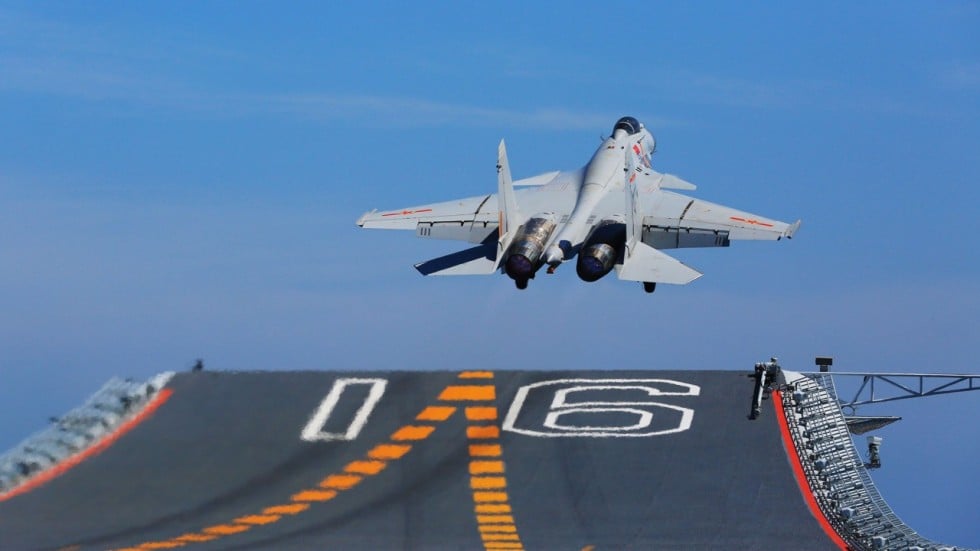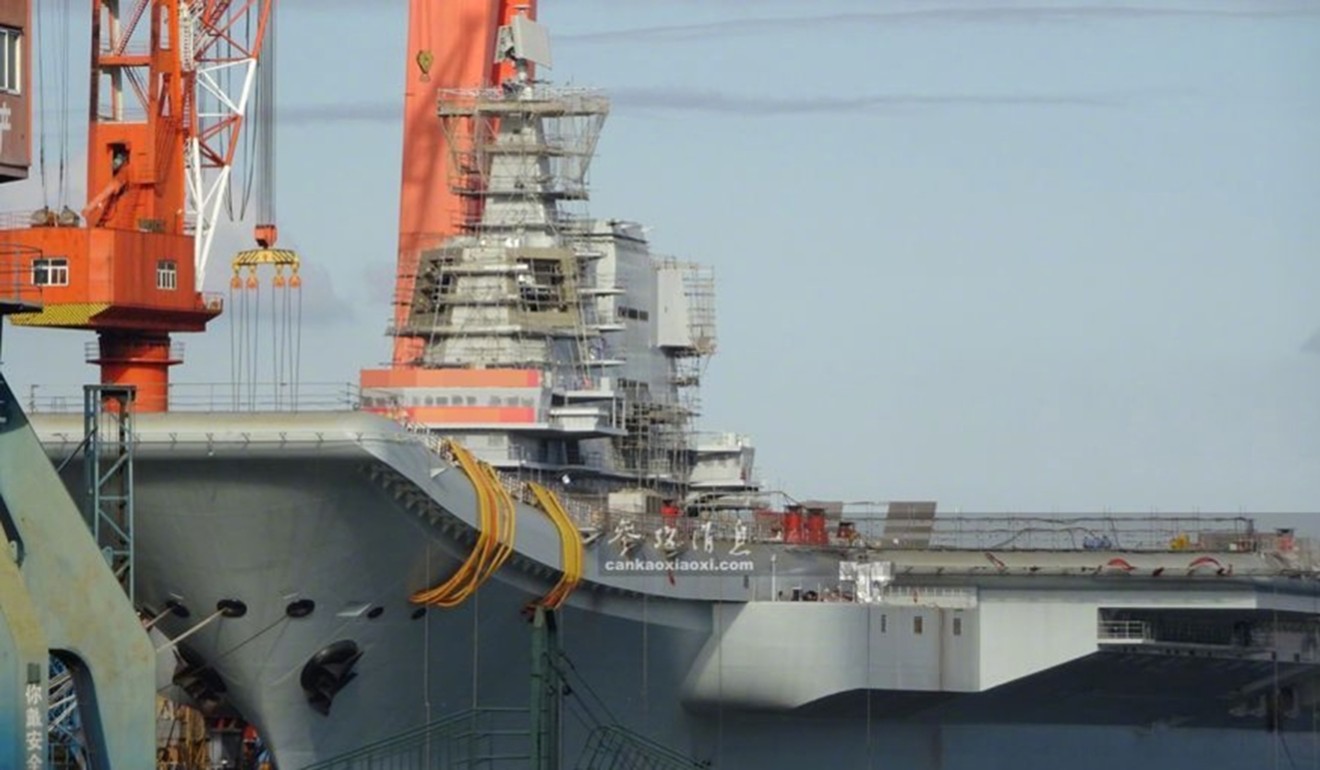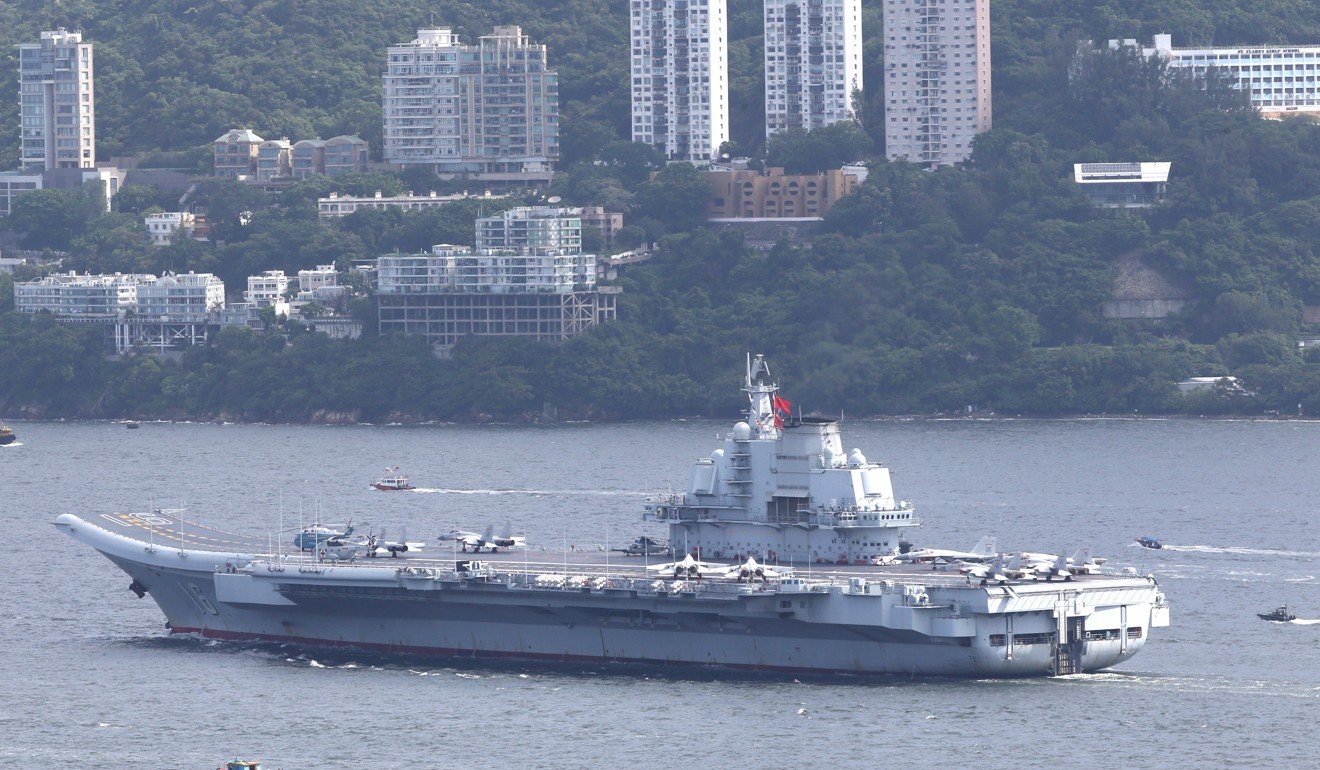Some of these numbers don't look right.
I'm not sure if I've ever read a mainstream outlet's article on the PLA that got the details right.
Some of these numbers don't look right.
Hope the size of the island could be reduced further, it is still huge.
Particularly SCMP seems to be off their rocker frequently.I'm not sure if I've ever read a mainstream outlet's article on the PLA that got the details right.
One thing to remember about the Forrestal is that it had radar domes scattered everywhere on the ship. In front of the bridge, out the sides, etc. At least the Liaoning keeps everything on top of the island. The other thing to remember is that every Nimitz except the Ronald Reagan and GHWB has a separate mast behind the island which takes up flight deck space, and the Ronald Reagan and GHWB have a larger island than the other Nimitz carriers in order to accommodate the mast on the island itself. There is definitely room to reduce the size of the Liaoning/Shandong's island, but probably not by as much as you would think.It's certainly very large. Not sure why. Could be due to Soviet design influence. Even the Forrestal class were no where close to this size and they needed a lot of venting.
They have been saying this for ages come on let's get going
Breakthrough to power most advanced jet launch system on China’s second home-grown aircraft carrier
Military chiefs have given green light for new integrated propulsion system capable of powering electromagnetic catapults, experts say
PUBLISHED : Wednesday, 01 November, 2017, 7:36pm
UPDATED : Wednesday, 01 November, 2017, 7:42pm

A technological breakthrough in naval propulsion will enable China’s second home-grown aircraft carrier to use the world’s most advanced jet launch system without having to resort to nuclear power, overcoming a huge hurdle in the vessel’s development, military sources said.
The development of the integrated propulsion system (IPS) would allow the vessel to be more efficient, allowing more power for an electromagnetic catapult, rather than a less technologically advanced steam-driven catapult launch system, the sources said.
China’s first two carriers, the Liaoning and its sister ship, the Type 001A, are conventionally powered vessels equipped with Soviet-designed ski-jump launch systems.
But an electromagnetic aircraft launch system (EMALS) on the Type 002, China’s second home-grown aircraft carrier, would mean less wear and tear on the planes and allow more aircraft to be launched in a shorter time than the ski and steam-catapult systems.

According to a source close to the People’s Liberation Army, China’s Central Military Commission was keen to use EMALS on the Type 002.
“[But] the obstacle … was whether a conventionally powered carrier would be able to support EMALS, and now that problem has been solved,” the person, who is close to the PLA’s equipment department, told the South China Morning Post.
The solution was provided by a team led by China’s top naval engineer Rear Admiral Ma Weiming, which developed a medium-voltage, direct-current transmission network to replace an earlier system based on alternating current.
As a result, the CMC, which is chaired by President Xi Jinping, has said the development of the Type 002, which had long been delayed, would get under way “soon”, the source said.
Wang Ping, an expert in military technology at the Institute of Electrical Engineering under the Chinese Academy of Sciences in Beijing, said the innovative design meant that high-energy consuming launch systems and weapons could now be used on a vessel driven by conventional power.

“It wasn’t just a simple switch from alternating to direct current, but a complete overhaul of the energy supply and distribution system – from steam boilers to the energy storage device,” he said.
Wang added that in the future, the same technology could be used to launch not just aircraft, but also missiles and satellites, and maybe even power high-speed trains.
A naval expert close to the carrier project confirmed that the CMC was now planning to proceed with the new power option.
“China doesn’t need to copy the United States and use nuclear reactors to support EMALS and other energy-hungry weapons on the ship, because it now has more advanced technologies to solve the problem,” the naval expert said.
The use of new power systems on the Type 002 is in line with the goals set out in Xi’s work report delivered at last month’s national Communist Party congress that China’s military should modernise by 2035 and become a top-ranked force by 2050.
“China now has mature technologies … [and] the PLA is narrowing the gap with the US,” the naval expert said.
He added that the US used an integrated propulsion system on its first USS Zumwalt-class destroyer, which was launched in 2013, but that it was not as advanced as the second-generation technology developed by Ma and his team.
In March, Ma, who is based at the PLA Naval University of Engineering in the central China city of Wuhan, told state broadcaster CCTV that the “ultimate aim” of his work on the IPS technology was to “solve the problem of deploying high-energy weapons” from ships.
He also said on the sidelines of the annual National People’s Congress in Beijing that China’s EMALS technology was more advanced and more reliable than the system used on the nuclear-powered USS Gerald Ford supercarrier.
The world’s largest and most expensive super warship – and the first to use both EMALS and advanced arresting gear – completed its maiden arrested landing and launch operation in late July, a week after its commission to the US Navy.
Additional reporting by Stephen Chen
48 fighters + 4 AWACs is exactly what a Nimitz carrier at 100,000 tons currently deploys. For an 80,000 ton carrier, I would expect 48 + 4 + some helos to be the upper limit of capability for a carrer of that size.The complement of 48 fighters and 4 AWACS seems much too small for a 80000 ton carrier. One would expect a carrier this size to be able to host airwings at least half again larger.
Also, I expect both the Chinese and USN will develop dedicated carrier based long range strike aircraft.
The complement of 48 fighters and 4 AWACS seems much too small for a 80000 ton carrier. One would expect a carrier this size to be able to host airwings at least half again larger.
Also, I expect both the Chinese and USN will develop dedicated carrier based long range strike aircraft.
48 fighters + 4 AWACs is exactly what a Nimitz carrier at 100,000 tons currently deploys. For an 80,000 ton carrier, I would expect 48 + 4 + some helos to be the upper limit of capability for a carrer of that size.
Don't forget J15s are huge and it's almost exclusively all J15s unlike a mix and match in US carriers from the past. We also do not know the internal volume of the hangar bay and total free deck space. While the 80K displacement is large, actual real estate on desk may be smaller due to larger island and a smaller deck.
Assuming the picture is accurate it has a length of 320 and beam of 80. Kitty Hawk has 326 and 86. A very rough math simplification would put KH class with 2400 ^2 meters more deck space alone.
Even if you 3/4 due to it not really a full square etc we're still talking at least 1500^2 meters more space on the FD.
